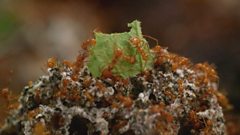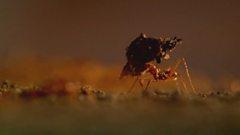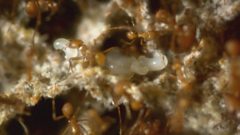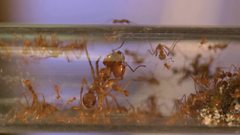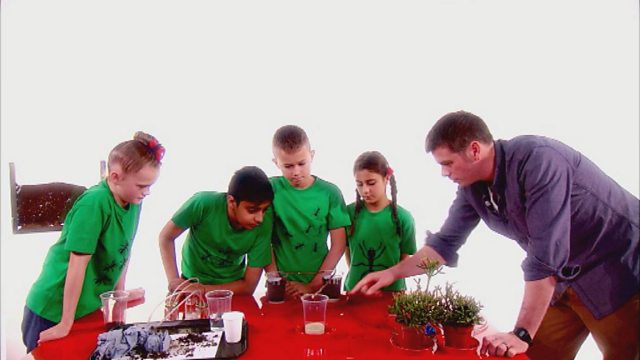
How to build a mini ant nest
Professor Adam Hart and four young scientists discover more about habitat of ants.
A leafcutter ant colony from Trinidad has been rescued and re-housed in a giant man-made nest in the UK, allowing an in-depth study into their normally hidden world. It’s the first time a man-made colony has been built on this scale and Professor Adam Hart gives four primary school scientists a tour.
Back in the lab, Adam and the children discuss what the ants need to survive - for example, food, water, and soil to protect the ants from the weather and to keep them warm. The young scientists create their own small ant colony using plastic cups, before being shown how to make and use a pooter to collect the ants.
Meanwhile, the ants from Trinidad are being monitored as they explore their new man-made home. Entomologist Dr George McGavin uses a ramp to bridge the colony to the foraging area where food is available. At first, a few ants venture across the ramp and then gradually the ants swarm across the bridge. In the wild, ants will forage for over 100 metres.
The young scientists use a piece of wood as a bridge between their small colony and some honeyed water, and soon find their ants crossing over to the food source.
Duration:
This clip is from
More clips from Life on Planet Ant - Learning Zone
-
![]()
What ants eat and what eats ants
Duration: 04:33
-
![]()
Inside an ant colony
Duration: 02:31
-
![]()
Life cycle of an ant
Duration: 04:07
-
![]()
Why are ants different sizes?
Duration: 04:19

